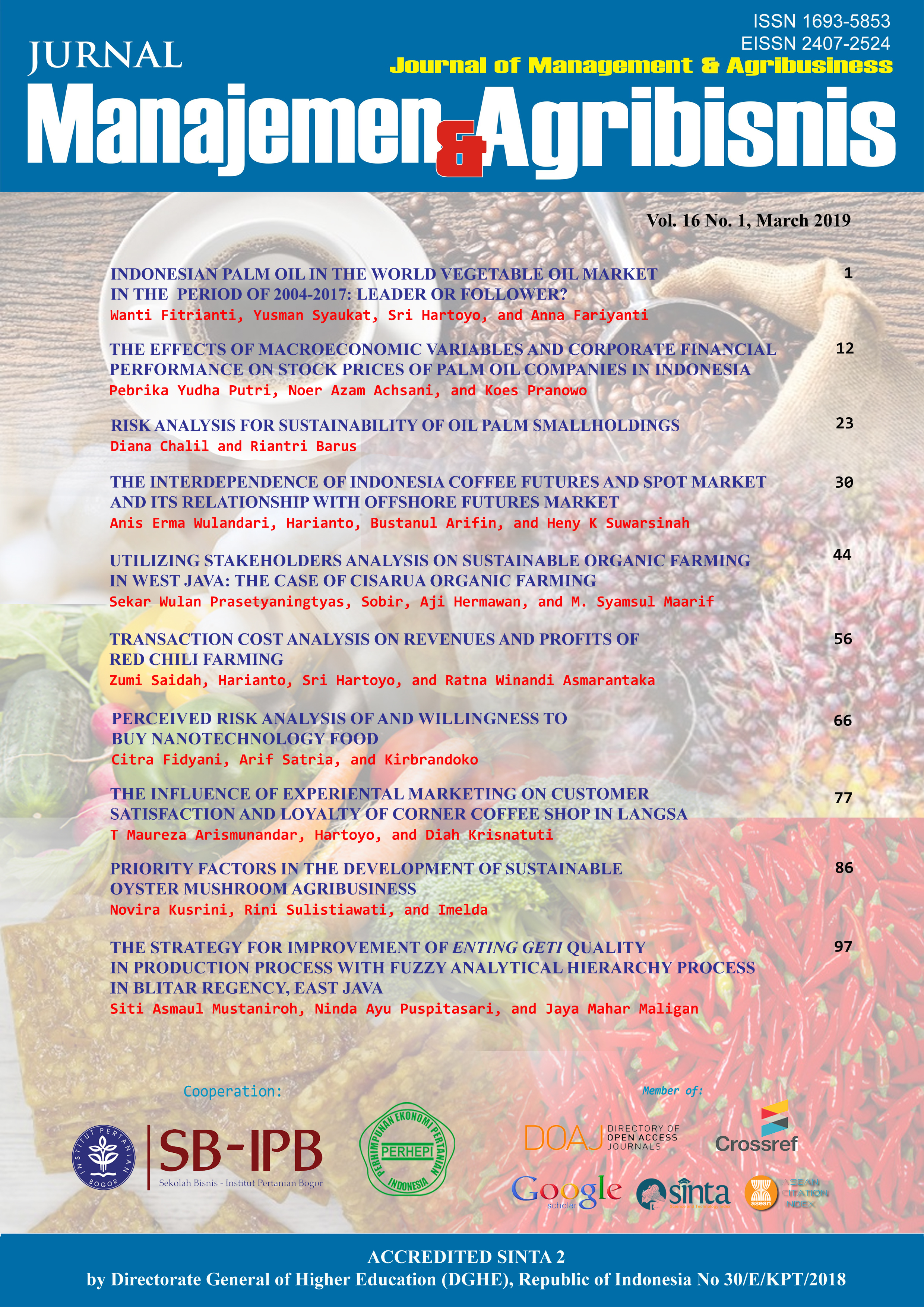Indonesian Palm Oil in The World Vegetable Oil Market in the Period Of 2004-2017: Leader Or Follower?
Abstract
This research specifically analyzed the market integration and transmission of Indonesian palm oil prices in the world vegetable oil market. The analysis using the Threshold Vector Error Correction Model approach was based on time series on the palm oil, soybean oil, rapeseed oil and sunflower oil prices for the period of January 2004 to June 2017. The findings proved the existence of market integration and transmission of asymmetric prices marked by price increases transmitted more quickly among the vegetable oil markets in the long run. The main findings of this research indicated that there was an intense competition between the vegetable oil market and the price of Indonesian palm oil which still followed the rising price of Malaysian palm oil, soybean oil, and rapeseed oil prices, but it was still the leader in the movement of sunflower oil prices. However, the long-term period of soybean oil prices followed a decline in the price of Indonesian palm oil. The results of this research imply that Indonesian palm oil has the opportunity to strengthen its position in the world vegetable oil market by developing futures exchanges that are supported by the adequate physical trading market infrastructure so that it can become the center of formation and reference for world palm oil prices.
Authors
Authors who publish with this journal agree to the following terms:
- Authors retain copyright and grant the journal right of first publication with the work simultaneously licensed under a Creative Commons Attribution License that allows others to share the work with an acknowledgement of the work's authorship and initial publication in this journal.
- Authors are able to enter into separate, additional contractual arrangements for the non-exclusive distribution of the journal's published version of the work (e.g., post it to an institutional repository or publish it in a book), with an acknowledgement of its initial publication in this journal.
- Authors are permitted and encouraged to post their work online (e.g., in institutional repositories or on their website) prior to and during the submission process, as it can lead to productive exchanges, as well as earlier and greater citation of published work (See The Effect of Open Access).

